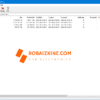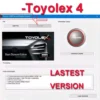No products in the cart.
A Guide to Adblue and SCR Technology in Cars 6
In previous blog we have discussed about DPF and impact of it’s removal on environment and you asked us what about ADBLUE? So here it is…
As environmental concerns have become more prominent in recent years, the automotive industry has been forced to adapt and find ways to reduce harmful emissions. One of the ways in which car manufacturers have addressed this issue is by incorporating technologies such as Adblue and SCR in their vehicles. In this blog post, we’ll take a closer look at what Adblue and SCR are, how they work, and why they’re important in modern cars.
What is Adblue?
Adblue is a clear, non-toxic, and non-flammable liquid that’s used to reduce the level of harmful nitrogen oxides (NOx) emissions that are produced by diesel engines. It’s made up of a solution of urea (32.5%) and deionized water (67.5%), and it’s injected into the exhaust system of diesel vehicles to break down the NOx emissions that are produced during combustion.

Chemical composition of Adblue
As mentioned earlier, Adblue is composed of a solution of urea and deionized water. The urea used in Adblue is a high-purity synthetic compound that’s produced by combining carbon dioxide and ammonia in a chemical reaction. The deionized water used in Adblue is water that has had all its mineral ions removed, making it extremely pure and free of any impurities.
Purpose of Adblue in cars
The purpose of Adblue in cars is to reduce the level of harmful NOx emissions that are produced by diesel engines. When Adblue is injected into the exhaust system of a diesel vehicle, it breaks down the NOx emissions that are produced during combustion into harmless nitrogen and water. This helps to reduce the environmental impact of diesel vehicles and make them more environmentally friendly.
What is SCR?
SCR stands for Selective Catalytic Reduction, and it’s a technology that’s used in diesel engines to reduce harmful emissions. SCR technology works by using a catalyst to convert NOx emissions into harmless nitrogen and water. This is achieved by injecting a solution of Adblue into the exhaust system of the engine, which then reacts with the NOx emissions and breaks them down into nitrogen and water.
How SCR technology works
SCR technology works by using a catalyst to convert harmful NOx emissions into harmless nitrogen and water. When the Adblue solution is injected into the exhaust system of a diesel engine, it reacts with the NOx emissions and breaks them down into nitrogen and water. The catalyst used in SCR technology is typically made of ceramic or metal materials and is coated with various chemical compounds that help to convert the NOx emissions into harmless nitrogen and water.
Advantages of using SCR in cars
There are several advantages to using SCR technology in cars. One of the main advantages is that it helps to reduce harmful NOx emissions, which can have a significant impact on air quality and public health. Another advantage is that it can help to improve the fuel efficiency of diesel engines, which can result in lower fuel costs and reduced carbon dioxide emissions.
Adblue and SCR in modern cars
In modern cars, Adblue and SCR technology have become increasingly common. This is because car manufacturers are under pressure to meet strict emissions regulations, and Adblue and SCR technology provide an effective way to do this. Adblue and SCR technology are typically integrated into the exhaust system of modern diesel vehicles, and they work together to reduce harmful emissions and improve fuel efficiency.
Compliance with environmental regulations
One of the main reasons why car manufacturers have incorporated Adblue and SCR technology into their vehicles is to comply with environmental regulations. In many countries, there are strict regulations in place regarding the level of harmful emissions that can be produced by vehicles. Adblue and SCR technology help car manufacturers to meet these regulations and avoid penalties for non-compliance.
Impact of Adblue and SCR on car performance and maintenance
Adblue and SCR technology can have an impact on car performance and maintenance. In terms of performance, Adblue and SCR technology can help to improve the fuel efficiency of diesel engines, resulting in lower fuel costs and reduced carbon dioxide emissions. However, it’s worth noting that Adblue and SCR technology can also add extra weight to the vehicle, which can impact its overall performance.
In terms of maintenance, Adblue and SCR technology require some additional care and attention. Adblue needs to be stored properly to prevent contamination, and it needs to be refilled periodically to ensure that the system continues to function correctly. Additionally, the SCR system requires regular maintenance to keep the catalyst clean and functioning properly.
How to use Adblue in cars
Using Adblue in cars is a relatively simple process, but it does require some care and attention to ensure that the system functions correctly. Here are the steps involved in using Adblue in cars:
Adblue storage and handling in cars
Adblue should be stored in a clean, dry, and cool place to prevent contamination. It should be kept away from direct sunlight and heat sources, as this can cause the Adblue to break down and become less effective. When handling Adblue, it’s important to wear gloves and eye protection, as it can be harmful if it comes into contact with the skin or eyes.
Adblue filling process
The Adblue tank in a car is typically located next to the fuel tank, and it’s marked with a blue cap to indicate that it contains Adblue. To fill up the Adblue tank, you’ll need to locate the filler cap and remove it. Then, insert the Adblue nozzle into the tank and fill it up until the level reaches the maximum mark.
It’s important to note that Adblue should only be filled up using a dedicated Adblue nozzle. Using a fuel nozzle can cause contamination and damage to the Adblue system.
Common issues with Adblue usage and how to troubleshoot them
There are several common issues that can arise when using Adblue in cars. One of the most common issues is running out of Adblue, which can cause the car to enter into a reduced power mode or even stop running altogether. To avoid this issue, it’s important to keep an eye on the Adblue level and refill it when necessary.
Another issue that can arise is contamination of the Adblue system. Contamination can occur if the Adblue is not stored or handled properly, or if the wrong fluid is accidentally added to the Adblue tank. To avoid contamination, it’s important to use only high-quality Adblue and to handle it with care.
If you do experience issues with your Adblue system, it’s important to take your car to a qualified mechanic for diagnosis and repair.
AdBlue Removal and Its Environmental Impact:
AdBlue removal can have a negative impact on the environment. The removal of AdBlue can lead to increased emissions of NOx, which is harmful to human health and the environment. The absence of AdBlue means that the SCR system will not work effectively, leading to higher emissions from the vehicle. Removing AdBlue can also damage the engine and reduce the vehicle’s overall efficiency.
Technical Process of AdBlue Removal:
The technical process of AdBlue removal involves disconnecting the AdBlue tank and removing the SCR catalyst. After these components are removed, the vehicle’s electronic control unit (ECU) must be reprogrammed to prevent warning lights from appearing on the dashboard. However, this process is illegal in most countries and can lead to significant fines and penalties.
Legal and Ethical Considerations of AdBlue Removal:
AdBlue removal is illegal in most countries, and car owners who engage in this practice may face penalties and fines. Additionally, the removal of AdBlue and SCR systems is unethical and contributes to environmental degradation. By removing AdBlue, car owners are contributing to increased air pollution and disregarding their responsibility to protect the environment.
Conclusion:
In conclusion, AdBlue and SCR systems are important technologies that help to reduce harmful emissions from diesel vehicles. Removing AdBlue can have a negative impact on the environment and is illegal in most countries. As responsible car owners, we have a responsibility to protect the environment and use our vehicles in a way that is sustainable and environmentally friendly. Let us support the use of AdBlue and SCR systems in our vehicles to reduce emissions and promote a cleaner and healthier environment for all.






Just another expense for end users imho… and income for car industry
Is adblue same as aditive on citroen cars?
Tampering with this system by turning off can have severe consequences. Firstly, it can significantly increase the emission of harmful pollutants, such as nitrogen oxide, which can have negative health impacts on people and the environment. Secondly, it can result in lower fuel efficiency and engine performance, causing more harm than good. Thirdly it is an integral part of the engine control system, and disabling it can cause various issues, includng engine damage, increased engine wear and tear, and costly repairs.
Good article, keep up great work!
Ugh, I hate hearing about AdBlue and SCR systems in cars. It’s just another way for car manufacturers to nickel and dime us consumers. I mean, why should we have to pay extra for a liquid to reduce emissions in our diesel cars? It’s not like they’re doing us a favor. And don’t even get me started on SCR technology. It’s just another complicated system that’s going to cost us even more in repairs when something inevitably goes wrong. Plus, who knows what kind of long-term effects all this technology is going to have on the environment? I say we should stick to simpler solutions that don’t cost us extra and don’t require all these fancy gadgets.
There are numerous adblue emulators available on the market that claim to bypass or disable the adblue system in trucks, which is illegal and can have serious environmental consequences. Look here – https://www.youtube.com/watch?v=yUFyBd9zEqg